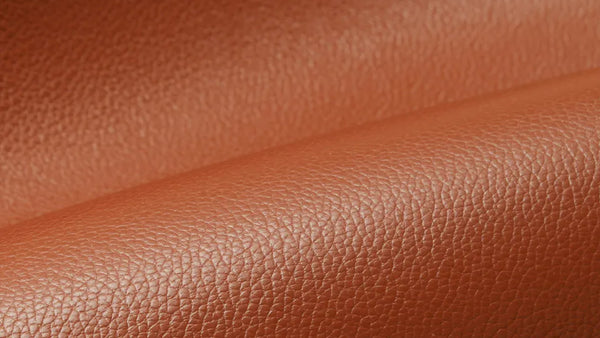Different Types of Leather
Different Types of Leather
The leather industry has quite a wide range of concepts and terms. In this article, we are going to take a look at some of the most preferred and used leather types. As we will see below, there are several details that determine the characteristics of the different categories of leather.

Full-Grain Leather
Full-grain leather is clearly the best quality leather. The upper part of the skin, which is also called dermis, is used on the making process of the full-grain leather.
It is believed that the dermis is the noblest part of the skin, so full-grain leather is considered a premium quality leather. It is on this part of the skin that the hairs of animals are implanted. The dermis is composed of collagen fibers, which are particularly dense.
Full-grain leather corresponds to the skin in all its thickness. That is to say that the surface of the leather is of very good quality and that we therefore decide to keep all of its original grain. We then obtain a relatively fragile leather because the surface has not been modified but a very high-quality leather. It is the noblest type of leather that can exist, and therefore retains the characteristics of the skin, namely flexibility and resistance.
It retains the natural grain and all the characteristics of the skin (suppleness, resistance, etc.), in particular roughness such as natural wrinkles, small scars or even healed scratches.
Advantages of full-grain leather:
· Durable: Thanks to its dense fibers, full-grain leather is durable and enduring.
· Breathable: Since the leather’s natural pores are untouched, full-grain leather is more breathable than other lower layers of the skin.
· Unique Patina: The full-grain leather will form a unique patina over time.
· Natural & Authentic: Aesthetically, it's probably the most elegant type of leather.

Corrected-Grain Leather
Corrected-grain leather is obtained from the top layer, which is the most valuable leather among the leather layers. In this type of leather, the unique traces on the skin of the animal or the scars caused by external factors are processed to remove them. Finally, the processed leather is tanned to any color.
The preservation of the natural tissues in the leather is also important in terms of the quality of the leather. In this way, the skin will be unique and one-of-a-kind.
Split Leather
Split leather is produced from the leather which is located right next to the flesh and forms the lowest layer of the dermis. This type of leather, which is generally used in furniture making, is harder than full-grain leather. Among the advantages of split leather, resistance to water, abrasion and punctures stands out.

Bonded Leather
Bonded leather consists of a mixture of different genuine and synthetic leather pieces; it is not expected to be long-lasting and durable. It is generally obtained by mixing the leather pieces left over during the production phase with synthetic materials. Within a few years, negative effects such as cracking are expected in products covered with this material. Very little of bonded leather contains genuine leather.

Faux Leather
In the previous paragraphs of our article, we took a look at the highlights of genuine leather types, but what is faux leather?
Faux leather or artificial leather is made of synthetic materials. It is an imitation of leather, a kind of plastic with a cold touch. It is short-lived and unstable, as it does not capture the appearance of real leather. On the other hand, genuine leather has a good smell, it is thick, resistant, comfortable, warm, and more expensive of course.
